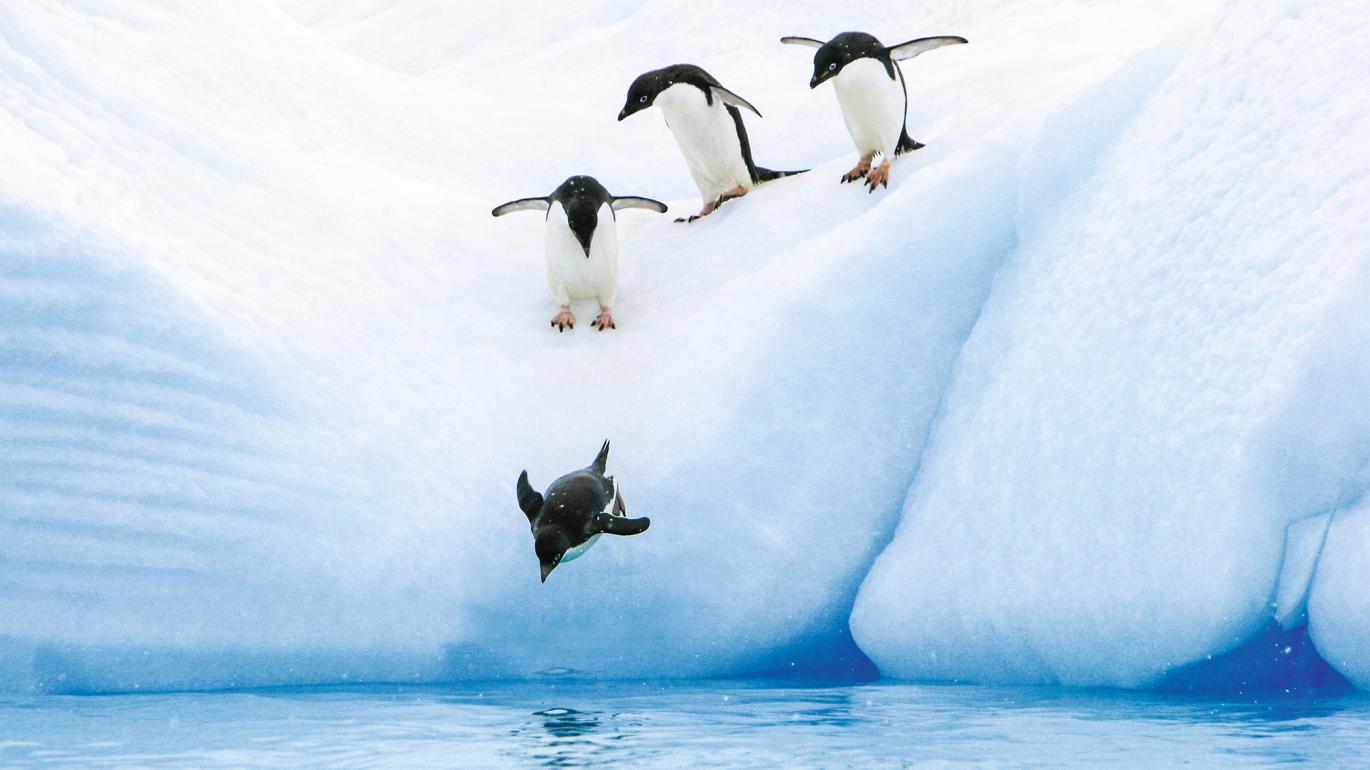
Antarctica Direct: Fly the Drake Passage
About the Journey
Venturing to Antarctica is an expedition like no other—a chance to explore wonderlands of sculpted snow and ice where whales swim, penguins flock and albatrosses soar. It’s a true journey of a lifetime that has historically called for multiple weeks of travel, including a round-trip sea crossing of the Drake Passage.
We are excited to share a more time-efficient way to discover the wonders of the White Continent without sacrificing any of the adventure. On this eight-day journey with National Geographic-Lindblad Expeditions, fly between South America and Antarctica on a round-trip flight and enjoy five adventure-filled days to explore the otherworldly realm at the bottom of the globe.
Aboard the National Geographic Explorer, each day is filled with new sights and sounds. Greet the southernmost sky with a sunrise stretch session, paddle a kayak past tabular icebergs the size of islands and walk among charismatic penguins. You’ll even have the rare opportunity to peer deep into polar waters from the comfort and safety of the ship via a remotely operated vehicle (ROV). A veteran team of naturalists will be on hand to provide expert perspectives, and a certified photo instructor can help you capture incredible images.
Princeton travelers will be joined on this adventure by those from National Geographic-Lindblad Expeditions.
Please note: January 21 is your arrival day in Puerto Natales, Chile. Most travelers from the U.S. will depart their gateway city on January 20 for an overnight flight.
This is an expedition in the truest sense—flexibility is key. Delays and early departures of flights due to inclement weather are common in Antarctica. In the event of a flight adjustment, your expedition team may implement a contingency plan with alternative activities. Please see National Geographic-Lindblad Expeditions’ FAQ page for more details.
View photos from our 2022 program “Journey to Antarctica: The White Continent.”
Accommodation
National Geographic Explorer
Designed for in-depth exploration, National Geographic Explorer is the definitive expedition ship, capable of navigating both polar passages and temperate waters. Fully stabilized and with an ice strengthened hull, she provides exceptional comfort, while her dynamic suite of exploration features—including an interactive chart room, a high observation lounge and a low-profile bow with dramatic views—reflect a dedication to curiosity and wonder. National Geographic Explorer accommodates 148 guests and is equipped with Zodiacs, kayaks, a Remotely Operated Vehicle (ROV), and underwater video camera.
Reservations
Registration is not yet open for this journey. Please request a brochure or contact the Princeton Journeys team at journeys@princeton.edu / 609.258.8686 with questions.
Trip Details
-
DatesJanuary 21 - January 28, 2027
-
Activity LevelActive - Environment
-
Costfrom $13,175 per person
-
Depositfrom $1,976 per person
-
Contact

